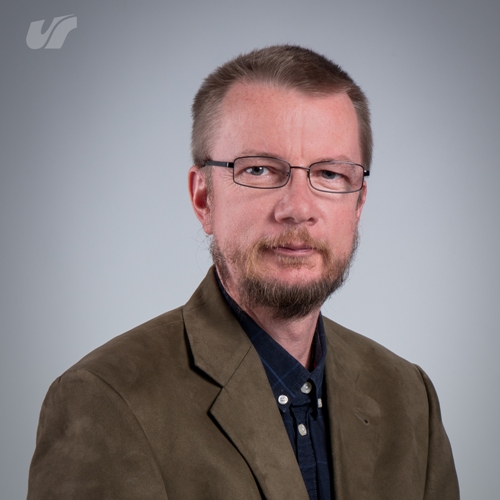CERN | My story
photo from the archives of the University of Silesia
SEWERYN KOWALSKI, PhD, DSc, Associate Professor
Personally, I’m still impressed by CERN – it is a large international laboratory where people from all over the world work together. I remain fascinated by modern technology and the search for something new in physics. In my humble opinion, CERN teaches us something more than just physics, and the satisfaction of working there is enormous.
|
CERN MY STORY
|
My adventure with CERN started a very long time ago – when I was still a fourth-year physics student and managed to qualify for the CERN Summer School. For me, it was an incredible experience – first time abroad, first time in such a large and international lab, the first time I worked with particle detectors. Back then, it was the tracing system for the CMS detector. I remember being very impressed by the lectures for students and the whole infrastructure of CERN. At that moment, the installation of the LHC accelerator and its operating detectors was nearing completion. This gave me the opportunity to visit the LHC tunnel and see all of the detectors that are currently in operation. It was an experience that sealed the choice of my future scientific path, I really wanted to become an experimental particle physicist. At that time, there was no such specialisation at the Institute of Physics of the University of Silesia, so I chose Experimental Nuclear Physics as the closest to what fascinated me. This choice of profession led me to bid farewell to CERN for several years. In 2010, I returned to CERN within the NA61/SHINE collaboration. Initially, the work of the University of Silesia team within NA61/SHINE was led by Prof. Wiktor Zipper; later, I took over this honorary function. In retrospect, I know that the people I work with every day are the most important. Without an experienced and committed team, it is impossible to work. As a team, we started our adventure at CERN (NA61/SHINE) with no experience – we were proficient in nuclear physics but not elementary particles. Over time, we have grown and played increasingly essential roles in this collaboration, taken more responsibility for the experiment, and represented the collaboration at many conferences and meetings. As a team, we have come a long way; to this day, I remember the thrill of excitement when we built the first charge detector for the experiment – the first tests and measurements were filled firstly with stress and then with the joy of a job well-done. Currently, the team from the University of Silesia is responsible for the hardware upgrade of the detector. We have received a tremendous amount of funding for this activity. Now the members of the team take on the role of coordinator and deputy coordinator of this experiment. Personally, I’m still impressed by CERN – it is a large international laboratory where people from all over the world work together. I remain fascinated by modern technology and the search for something new in physics. Of course, CERN is also a school of teamwork – a place where one person does not matter, and only a team can do the job. For me, it is also a school of management. In the experiment, I coordinate the management of IT resources, I am the technical coordinator, and I am also responsible for the hardware upgrade of the detector that is currently in progress. This requires coordinating the work of several international teams responsible for different parts of the detector. The experience gained in this way is invaluable – I don’t know if it would be possible to work with such a large international team elsewhere, in such a huge physics laboratory. In my humble opinion, CERN teaches us something more than just physics, and the satisfaction of working there is enormous. I also hope that my adventure with CERN will continue, and the team from the Institute of Physics of the University of Silesia will grow stronger and develop dynamically. |
|






